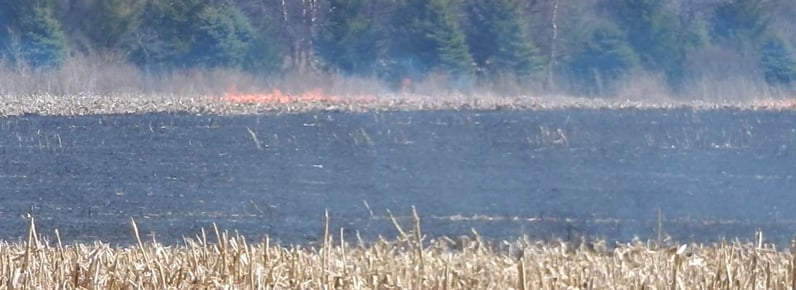Grass fires area a common hazard in certain parts of the country that are dry for extended periods of time or have periods of dry weather where crop residue, pastures and grasslands are very dry. Nearly half of all agricultural fires involve brush or short grass, making it easy to underestimate their danger.

What Makes Grass Fires So Hazardous
Grass fires can move very quickly, especially in fields where fuel is in plentiful supply. Under the right conditions, these types of fires can produce flames up to eight feet tall and can move up to 15, faster than any person can move. Few animals, wild or domestic, can escape a fast-moving grass fire. To make matters worse, grass fires tend to produce a lot of smoke, making it difficult to know what direction it is moving or when its path has shifted.
Preparedness Is the Best Defense
We’ve talked about Emergency Action Plans (EAPs) before, and the possibility of a grass fire is another one of those potential hazards that should be included in your EAP, especially if your operation is based in a location where grass and wildfires are common. Maintaining heavily-grazed areas and dry feedlots is a valuable practice for any livestock operation. In the event of a fire, livestock can be moved to these locations to keep them safe. Controlled burns are also a common practice for creating firebreaks.
Other Precautions
- Smoldering cigarette butts should never be thrown out a vehicle or tossed to the ground. Many a wildfire has been started by such a thoughtless act.
- Any machinery operating in high-risk areas should be equipped with spark arresters.
- Vehicles driven out in the field should be parked somewhere that grass can’t touch the underside of the vehicle.
- Animals instinctively move away from danger. If a wildfire erupts in an area where livestock are present, be sure to evacuate yourself and others in the area and don’t worry about the livestock. So long as they have an escape route they will find their way out of danger.
Of course, if a grass fire does get started, the first thing you should do is evacuate the area. Emergency personnel should be contacted immediately, as they have the equipment and training to deal with this type of hazard.



